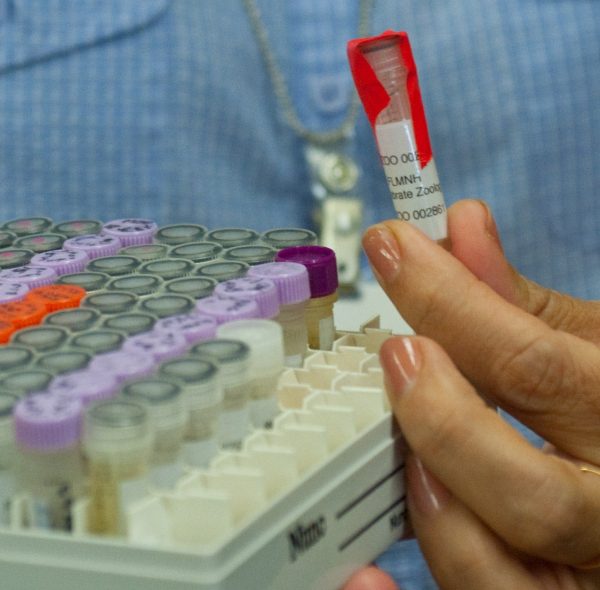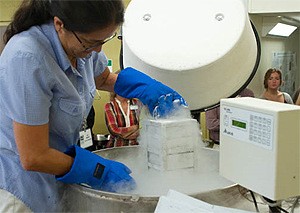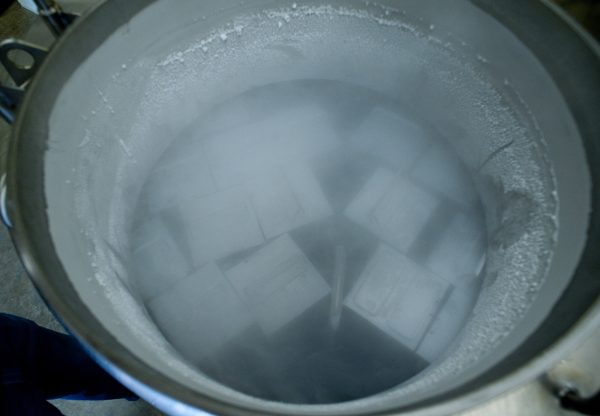
Photo by Jeff Gage
The Florida Museum of Natural History has added specimen number 20,000 to its Genetic Resources Repository, a nitrogen-cooled freezer with a temperature of minus 300 degrees Fahrenheit.
The freezer at Dickinson Hall stores tissue samples and DNA preparations from physical specimens in the museum at extremely low temperatures to preserve the integrity of the samples for future research. During a brief ceremony marking the occasion on December 2, the temperature gauge read minus 308 degrees Fahrenheit.
“The Florida Museum has the world’s largest comprehensive collection of DNA and tissue samples,” said Pam Soltis, Florida Museum curator of molecular systematics and evolutionary genetics. “It’s unique because it includes specimens of invertebrate, vertebrate and plant species.”
The Florida Museum received a National Science Foundation (NSF) grant to install the freezer in 2006. About two-thirds of the specimens have been added in the last 18 months.

Photo by Jeff Gage
“It’s really exciting to have hit this point so quickly,” Soltis said. “Too often molecular analyses lose track of the actual organisms. By providing DNA and tissue samples that are linked to our own specimens, we can encourage a more comprehensive analysis of biodiversity.”
The repository receives specimens from the museum’s mammal, herpetology, bird, invertebrate zoology, ichthyology and Lepidoptera collections, as well as its herbarium and molecular lab. Invertebrates make up 54 percent of the samples, the result of a large NSF grant to curator Gustav Paulay to prepare 25,000 DNA samples as part of an international barcoding project. Other museums and institutions have also contributed samples of their specimens to the repository.
Sample requests are batched together to limit the number of times the freezer is open, said Lorena Endara, a graduate student and research assistant in charge of maintaining the system and processing requests.

Photo by Jeff Gage
The cryogenic freezer runs on a vapor system that does not require samples be immersed in liquid nitrogen, Endara said. Instead, 5 to 8 inches of liquid at the base of the unit keep the samples frozen as the nitrogen evaporates. The liquid nitrogen must be recharged every 10 to 13 days.
Providing researchers subsamples from the repository prevents the original specimens from being repeatedly sampled and potentially damaged. And keeping all the museum’s samples in a cryogenic freezer prevents the samples’ DNA from degrading and ensures that the samples remain viable for generations to come.